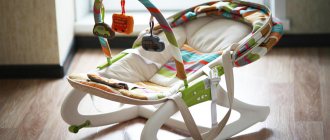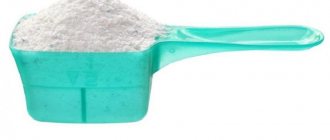Why is a urine test needed?
To assess the condition of the body, along with a study of the composition of the blood, which is collected using special blood collection systems, a general urinalysis (UCA) is performed. This is the simplest and most painless way to identify various diseases, pathologies, and abnormalities in the functioning of both the entire body and its individual systems and organs. A referral from a doctor to submit urine for analysis should not cause any concern to the parents of the baby, because, despite the active development of new technologies, including in medicine, laboratory diagnostics of urine has not lost its importance to this day.
When diseases occur, the composition of urine changes, and microorganisms begin to actively develop in it. Therefore, with the help of its diagnostics, it is possible to identify the presence of infectious diseases, diabetes, hepatitis, problems with the genitourinary system, and so on.
This type of research is no less in demand as a preventive method. It must be taken before vaccination, during medical examination. During treatment, the doctor may order a repeat test to ensure the effectiveness of the selected medications.
Particular attention is paid to the health of children in the first year of life. For them, urine testing is prescribed at least 2 times a year. To conduct one analysis, 50-100 ml of liquid is required. Of course, there are exceptions, for example, to assess the health of a one-month-old baby, 10-20 ml is enough.
Methods for collecting urine from infants
Most young mothers are confused when it becomes necessary to collect urine from a newborn baby for testing. The most correct and safe way to collect urine from a baby is to use a special device - a urinal. However, there are several folk methods for carrying out the procedure: using a plastic bag, glass or plastic jar, plate.
Collecting urine using a bag
Take a large new plastic bag. The handles are cut, the bag is put on the baby from below and the handles are tied (secured) on the hips. After this, the child must be picked up and held in an upright position until urination occurs. A very small baby can simply be placed on a diaper, with a bag placed on top of it.
This method, simple at first glance, has a significant drawback - in addition to being quite uncomfortable for the child, it is impossible to comply with the requirement of sterility when using it. Foreign microorganisms may get into the collected biomaterial, which will not allow the doctor to draw the right conclusions.
Collecting urine in a jar
Glass jars are more preferable because they can always be thoroughly washed and sterilized even at home. However, this method will require a lot of time, patience, and dexterity. Having prepared the container, the baby should be placed on a clean diaper without diapers, panties or onesies. Wait until the process of urination begins, and then quickly place the jar under the stream.
This method is most convenient for boys. Urine collection from girls is carried out in a clean (sterilized) plate, which is placed under the bottom, which can cause discomfort and anxiety to the baby.
Urinal
It is most convenient for both mother and child to collect urine for analysis using a urine bag for the baby. The adhesive surface ensures reliable fixation, a special hole directs the flow into a durable bag designed to collect liquid. This safe and easy-to-use device is inexpensive and has a lot of advantages.
Urinal: what is it and what is it for?
Probably, the name alone has already prompted you to think about what a urinal is. This is a convenient and incredibly simple device for collecting urine .
It consists of a sterile polyethylene container, similar to a bag, with markings and a hole. Adhesive tape is applied to the edges of the latter, thanks to which the urinal is kept in the right place.
At the same time, the baby does not feel the slightest discomfort, but his mother experiences a feeling of deepest satisfaction, anticipating a quick outcome of the work begun. By the way, you can carefully examine this device and personally verify its benefits thanks to the photo.
I would like to note right away that urinals purchased in pharmacies are absolutely safe for the baby. Their glue contains nothing that could cause irritation or an allergic reaction, and it is easily washed off with warm water.
On the modern market there are both urinals for girls and boys, taking into account their physiological characteristics, and universal options.
It won’t be difficult to understand them, especially since they differ only in attachments :
- Oval ones are considered universal and equally effective for both boys and girls.
- The egg-shaped nozzles, somewhat pointed on one side, are intended for babies.
- Nozzles with branches on the sides are for babies.
A pleasant bonus when using a children's urinal is its price. With a pure heart, you can call it “penny” and, without hesitation, buy not one, but two urinals at once. In case you can’t glue it in the right place the first time.
Benefits of using a urine bag
The urine collector has practically no disadvantages. Some parents complain of an allergic reaction that occurs on the baby’s skin at the site where the device is attached. If a child is prone to allergies, then it is advisable to pre-test by attaching a urine bag to the baby’s body for 10-15 minutes. The same device can no longer be used to collect urine.
The design of the device includes several elements:
- a small durable plastic bag (the inner surface is sterile) with graduations applied to it, designed for 100-120 ml (for babies) or 200 ml of liquid (urinal for older babies);
- urinary opening;
- “Velcro” for fixation, on which an adhesive composition is applied.
Collecting biological fluid for analysis using this device is convenient, safe and allows you to obtain accurate data on the baby’s health status. It has a lot of advantages, thanks to which parents are increasingly abandoning the old “grandmother’s” method and using a device specially designed for this procedure. Among the advantages of this method are the following:
- there is no need to subject the baby to sometimes quite harsh tests, to adapt, to spend a lot of time tracking the start of urination;
- the use of a sterile bag avoids obtaining false results due to opportunistic or pathogenic microorganisms entering the liquid;
- a special anti-return valve prevents the leakage of collected urine;
- the durable plastic bag does not rustle, so the device can be attached even to a sleeping child without disturbing his sleep;
- securely attached to the body without causing discomfort; if desired, you can put on diapers, panties, or wrap the baby in a diaper.
The bottom end of the bag is sealed. After collecting urine, the bag is carefully cut, the liquid is poured into special sterile jars for urine analysis and taken to the laboratory for diagnosis.
What is a children's urinal?
This is a cellophane (or other synthetic material) sterile container with marked divisions. It has a hole, the edges of which contain a special Velcro for attaching to the baby’s skin in the crotch area. The tank volume is 100 ml.
The urinal is intended for collecting urine from infants for analysis. The device does not contain substances that cause an allergic reaction. It is easy to stick and remove. After use, the remaining glue is washed off well with warm water. You can learn how to put a urine bag on a boy by carefully reading the instructions.
Types of devices
Children's urine collection bags are made of durable, but soft, elastic plastic that is pleasant to the touch, because it comes into contact with the delicate skin of babies. The adhesive base, with which the device is attached to the baby’s skin, is hypoallergenic, and on the package itself there are markings with a price of 10 ml, which allows you to track the amount of liquid collected. Depending on the manufacturer, the devices may differ slightly from each other.
At the same time, all presented models can be divided into two large groups, depending on the gender of the child for whom they are intended.
The opening of the urinal for a boy has a not very large cutout into which the genital organ is placed. At the same time, products intended for girls are distinguished by the presence of a special protrusion directed inside the oblong hole. It closes the opening to the vagina, protecting it from urine.
Types of urinals
The genital organs of girls and boys have certain physiological differences. Manufacturers of urinals took this fact into account , which is why several varieties of such products are on sale. For girls, the urinal is designed with a pair of branches. The remaining parts of the plastic bag are unchanged.
Urinals for newborns can be universal or different in shape, taking into account the anatomical characteristics of boys and girls
Since the relief of the girls’ genital organs was taken into account, this helped to eliminate the displacement of the product and prevent the occurrence of leakage. Medical containers for collecting general urine analysis in boys also have their own characteristics, as they differ in the shape of the hole. The product is fixed in a few seconds.
The urine collector is in wide demand in pediatrics. For newborn girls, you can purchase a universal option. It has no restrictions regarding the gender of the child. Care must be taken when fixing it to the skin.
Rules for using the device
Devices for collecting urine from newborns appeared relatively recently, but have already gained popularity due to their availability and ease of use. However, for quick, trouble-free use, you should strictly follow the instructions located on the outside of the package. Some mothers don’t get everything right the first time; they have to practice, carefully observing all the nuances of operation.
- Before using the device, you must not only read the instructions for use, but also make sure that the shelf life of the purchased product has not yet expired.
2. To prevent foreign microorganisms from entering the biomaterial, you must thoroughly wash your hands with soap. Otherwise, you may get results that do not correspond to the actual state of the baby’s health.
3. Tear the packaging carefully so as not to damage the device.
4. Carefully remove the protective layer from the adhesive surface without touching it with your hands or other objects.
5. Place the device with the hole on the urethral area. In this case, the urinal for girls is placed as a reservoir over the labia majora, leaving the vagina and anus outside. The procedure for putting on a device designed for boys is simpler and usually does not cause difficulties for parents.
6. The installed device is securely fixed to the baby’s skin using a special sticky layer; to do this, just press it lightly with your hand.
7. If everything was done correctly, the tank will not cause any discomfort to the baby. However, to prevent accidental tearing of the urine bag during active movement of the legs, you can put a diaper, panties, or panties on top of it
8. After some time, you need to check the fullness of the container. If the process of urination has occurred and the container is full, you should carefully separate it from the child’s skin. Do not rip off the device with a sudden movement, as there is a risk of damaging the baby’s thin, delicate skin.
9. The urinal reservoir is not intended for delivery of biomaterial to the diagnostic laboratory. To do this, the collected liquid is poured into a sterile container for analysis. Some devices have a special valve for this; otherwise, carefully cut one of its lower corners.
Liquid collected for subsequent analysis should not be stored in the refrigerator, even overnight, as this may result in incorrect data.









